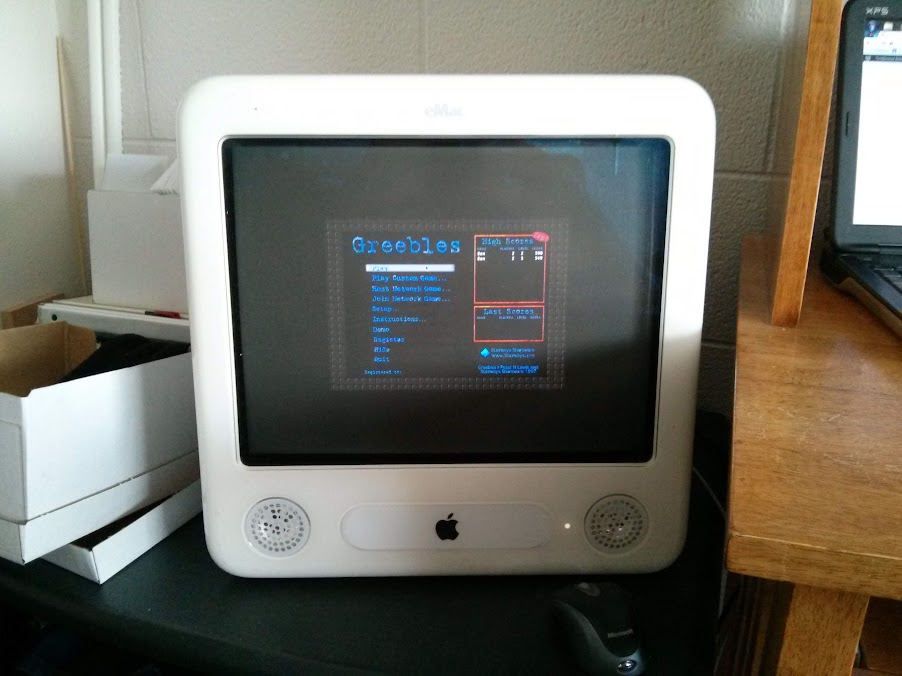Once upon time, in the far away land of Burkholder, there was a young classroom of curious computer literacy students. They were subjected to grueling blindfolded typing tests and mind-numbing lectures each morning, but twas not all awful. On occasion these friends found time to amuse themselves by engaging in virtual contests of dexterity and skill, which cast rays of joy into their youthful souls. The most popular and exciting of all these contests was Greebles. Seemingly without limits with regard to the number of contestants or length of play, Greebles was adored by all.
Sadly, their joy could not last.
For Greebles had been made for the PowerPC architecture of Mac OS 9, built by the mighty kingdom of Apple. Soon thereafter however, Apple abandoned OS 9 and the old architecture. The serfs of Stairways software, the publishers of Greebles, would also abandon their product, leaving thousands of loyal followers without means to preserve the joys of their youth.
Many years passed, and people began to forget about Greebles. One of the youths from Burkholder however, began to remember. He was an apprentice in the ways of software development, and desired to undertake a quest to use his skills to resurrect Greebles. He sent word to Peter Lewis, the leader of Stairways software, explaining his intentions. Many days passed before word came back, but when it arrived, the youth was overjoyed to read that Peter gave his blessing to the quest, and included with his message ‘sprites’, ‘level definition files’, and ‘sound effects’ to help the youth.
The young man embarked, anxious to complete the quest and restore joy to his friends of ages past. Sadly, he underestimated the skill, strength, and time that the quest would exact of him. Twice he began, and twice he failed. For a time, he gave up, painfully aware that he lacked what was necessary to achieve his desire. He continued his apprenticeship, and began university studies, absorbing and learning all he could of the ways of the master developers. However, always, in the back of his mind, was Greebles.
Now, nearly half a decade later, he is ready to try again.
http://www.stairways.com/action/linkthru?greebles
http://www.infam.ch/greebles/
http://www.youtube.com/watch?v=tMnthmrB-eo







